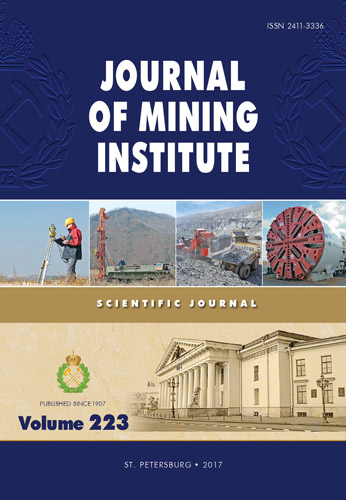Modelling of fiberglass pipe destruction process
- 1 — Saint-Petersburg Mining University
- 2 — Mining Metallurgical Institute
Abstract
The article deals with important current issue of oil and gas industry of using tubes made of high-strength composite corrosion resistant materials. In order to improve operational safety of industrial pipes it is feasible to use composite fiberglass tubes. More than half of the accidents at oil and gas sites happen at oil gathering systems due to high corrosiveness of pumped fluid. To reduce number of accidents and improve environmental protection we need to solve the issue of industrial pipes durability. This problem could be solved by using composite materials from fiberglass, which have required physical and mechanical properties for oil pipes. The durability and strength can be monitored by a fiberglass winding method, number of layers in composite material and high corrosion-resistance properties of fiberglass. Usage of high-strength composite materials in oil production is economically feasible; fiberglass pipes production is cheaper than steel pipes. Fiberglass has small volume weight, which simplifies pipe transportation and installation. In order to identify the efficiency of using high-strength composite materials at oil production sites we conducted a research of their physical-mechanical properties and modelled fiber pipe destruction process.
References
- Бобылев Л.М. Труба или решето? // Нефть России. 2000. № 1. С. 64-68.
- Варфоломеева Л. Информационные технологии на службе нефтегазовой отрасли России // Нефть России. 2004. № 9. С. 24-25.
- Зайцев К.И. Пластмассовые трубы – перспектива замены стальных труб на нефтепромыслах // Строительство трубопроводов. 1996. № 4-5. С. 7-11.
- Карнаухов М.Л. Справочник мастера по подготовке газа / М.Л.Карнаухов, В.ВА.Кобычев. М.: Инфра Инженерия, 2009. С. 256.
- Касьяненко В. Биологический фактор коррозии // Нефть Газ Промышленность. 2004. № 6 (11). С. 18-20.
- Ягубов Э.З. Композиционно-волокнистые трубы в нефтегазовом комплексе / Э.З.Ягубов, И.Ю.Быков. М: Центр ЛитНефтеГаз, 2008. С. 271.
- Abdul Majid M.S. Effect of Angeles in biaxial ultimate elastic wall stress (UEWS) / M.S.Abdul Majid, M.Afendi, R.Daud, M.Hekman // 2nd International Conference on Sustainable Materials, 2013. P. 424-428.
- Agarwal B.D. Analysis and Performance of Fiber Composites / B.D.Agarwal, L.J.Broutman // John Wiley & Sons, Inc., 1990.
- Frost S.R. Glass fibre-reinforced epoxy matrix filament wound pipes for use in the oil industry / S.R.Frost, A.Cervenka // Composites Manufacturing. 1994. № 5(2). P. 73-81.
- Hashin Z. A Fatigue Failure Criterion for Fiber Reinforced Materials / Z.Hashin, A.Rotem // Journal of Composite Materials. 1973. № 7(4). P. 448-464.
- Jones M.L.C. Microscopy of failure mechanisms in filament wound pipes / M.L.C.Jones, D.Hull // Materials Science. 1979. № 14. P. 165-174.
